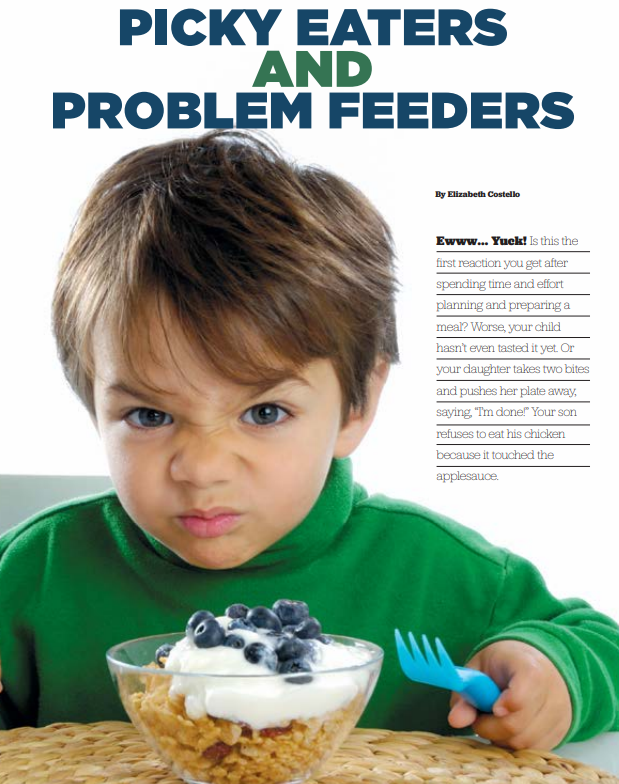As a mom of two myself, I understand all too well how challenging it can be for parents to get their kids to eat foods that give them all the vitamins and nutrients their body needs and balance quantity and quality. But there are good reasons to keep trying because it’s surprising how just 50-100 extra calories a day over time can change a child’s weight trajectory impacting their health, or a diet short in nutrients can impact their development. Even though kids might have a reputation for being picky eaters, there are ways to get them on the right track.
Purchasing and modeling
One of the most important things we do for our kids is model good habits and behaviors – it’s the same when it comes to food. What we buy at the grocery store and eat at home is the key first consideration. Kids, especially young kids, will mostly eat what is available at home. That’s why it’s important to grocery shop mindfully, make sure you have easy, healthy snacks on hand and minimizing processed foods like cookies, chips, crackers, and fast food.
The best way to encourage healthy eating is to eat well yourself. Kids will follow the lead of the adults they see every day. You can even encourage your child to try new foods, like vegetables, by taking them from your plate. It’s also important to be mindful of how you talk about food. Talk to your kids about food as fuel to give them good energy and feeling full – remind them to listen to their bodies so they know when to be done eating. Similarly, remind kids that they should eat when their body tells them they are hungry. The concept of ‘finishing everything on their plate’ is not congruent with listening to their body.

Fruits and veggies
It’s really important to include fresh fruits and vegetables as much as possible, though frozen works too. Make it your goal for every meal. Summer is a wonderful time to explore growing fruits and vegetables and creating a garden with your child! When kids are part of the process, they’re more likely to eat it. That goes for grocery shopping and making meals too. Talk with and show them the beautiful produce colors and have them help you choose the fruits and vegetables to buy. Invite them in the kitchen to help with meal prep. This can help kids learn to make healthier choices about food. Changes won’t be immediate, but they can help lead to a lifetime of healthy choices!
The earlier we start encouraging kids to eat healthy, the easier it will be. But for kids who are late to the nutrition party, how do you start? The answer is by still doing all of the above, but also by making fruits and vegetables into something your child will eat. You can add extra vegetables to sauces for pasta; add pureed cauliflower to mac and cheese; or make them a smoothie with fruits, yogurt and spinach. For breakfast, it’s easy to lean into fruits by adding them to oatmeal or cereal. But, I have even added cooked carrots and peas into pancake batter with my kids! Once cooked and with a bit of syrup and kids don’t care. If you’ve tried everything with no luck, think about giving your child a multivitamin – but still keep trying.
Protein
Protein is very important part of your child’s diet. Try to build it into every meal. Aim for at least a half the child’s weight in pounds as the minimum in grams of protein per day (ex. 40 lb child = 20 grams of protein minimum per day). Protein makes your child feel full –without protein, kids may inadvertently get more calories than needed through snacking. If carbohydrates are what your child craves, then add protein. There are many ways to get protein into your child’s meals with lean meats, eggs, dairy, nuts or nut butters, and beans. Though, if your child is allergic to any of those foods, it can be tricky, and you may need to work with a pediatrician or nutritionist for alternatives.
Dairy and the alternatives
Finally, dairy is really important for your child’s bone development. If your child or family don’t drink cow’s milk, see if there’s a milk alternative with added calcium. Though juices like orange juice may have added calcium, juices are often loaded with extra sugar and an unreasonable number of calories. I recommend keeping orange juice to a small glass, maybe diluted, once a week if needed.
Healthy eating is an important part of helping kids grow well. But changing eating habits isn’t easy! Whether your child is a picky eater or resistant to change, your pediatrician is here to help.
Ask the Pediatrician column featuring Dr. Gigi Chawla, the Chief of General Pediatrics at Children’s Minnesota.


















